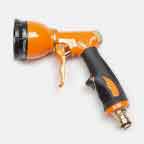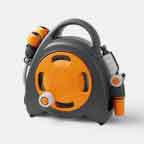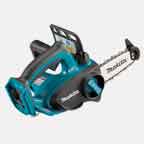General Advice
Latest Articles
-
Anvil versus Bypass Secateurs
-
Cut n Hold Pruner: Pick Fruit or Flowers
-
How to Choose the Best Ratchet Secateurs
-
How to Properly Use Secateurs for Pruning?
-
How to Select the Right Gardening Gloves
-
Know the Benefits of Using a Pole Saw for Tree Pruning and Maintenance
-
Pruning Hedges
-
Secateurs - types and uses
-
Ten Practical Pruning Tool Tips
-
Time to Prune
-
Tips for Picking Up Leaves
-
Top 5 Maintenance Tips to Keep Your Long Pole Saw in Peak Condition
-
What Are Secateurs and Why Are They Indispensable for Your Garden?
-
What Key Features Should You Look for in an Extendable Tree Pruner?
-
What to look for in garden tools
-
Why Every Gardener Should Invest in Long-Handled Secateurs?
CutAbove Tools
Ten Practical Pruning Tool Tips
- Buy what you can afford. Take heed of the saying "You get what you pay for!" Doesn't mean you have to buy the most expensive item but consider your gardening needs.
- Try before you buy. Not always possible but if you see someone selling tools take the opportunity to touch, feel and even cut some plant material. A good retailer will have a selection of tools for you to select from. A Garden Show is a good time to compare tools. If you can't try before you buy (on-line purchase) then at least check the length and weight of the tool, and the size it will cut. Measure your current tools to compare.
- Check availability of spare parts. Think sustainability. We've become a throw-away society, but we don't need to. A good pruning tool supplier should have all the spare parts.
- Warranty -what does this mean? Warranties are intended to cover you if there is a fault in the item in terms of manufacturing and assembling of the parts. If something is going to go wrong, it is likely to be in the first few uses. If someone is offering a lifetime warranty you really need to check what it covers - blade (normally not), spring, nuts and bolts, handles? What is the difference between normal wear and a manufacturing fault when the product is say five years old?
- Buy something suitable for you. Try this checklist:
- Size - for example, if purchasing secateurs, do they fit nicely in the hand. Whilst you might want to cut a big stem it is no good buying a large pair of secateurs if you can't get your hand around it.
- Weight - with the modern materials of plastics and aluminium it is possible to get many lightweight products suitable for your needs. Hold the product for a while as if you are trimming a hedge, or lopping a branch, and determine if you can manage the tool.
- Mechanical advantage - many products today have gear actions or ratchet mechanisms to make the task easier. If you have some tendonitis or arthritis, then consider these options.
- Reach - many items are extendable however this will add to the weight. Check what you need to cut and if possible, keep your feet on the ground. There are many light-weight extendable poles with pruning and saw attachments.
- Wipe the tool dry after use. Blades and other parts are made from steel and will quickly rust with moisture.
- Clean with a 70:30 ratio of Methylated Spirit: Water mixture. This will clean and disinfect the blades. Use a small brass brush to scrub the more stubborn saps. The brass brush is soft and will not damage the blade or other parts. There are many commercial products available on the market including WD30 cleaner - a citrus based foam cleaner.
- Sharpen as required. Each time you sharpen you are removing metal from your blade so when you are not getting a nice easy clean cut, then it is time to sharpen. Sharpening devices include whetstones, diamond files, sandpaper and tungsten carbide. The latter is a hard substance that provides an economical way to sharpen your tools.
- Lubricate your tools from time to time. Typically, any moving parts, including the silver volute spring on the secateurs. You can use an oil or spray lubricant.
- Store your tools in a dry place. First you may wish to smear some oil (machine oil, 3inOne, Singer) onto the blade(s) of your tool. Cover the blades and put into a cupboard in your shed or garage.












